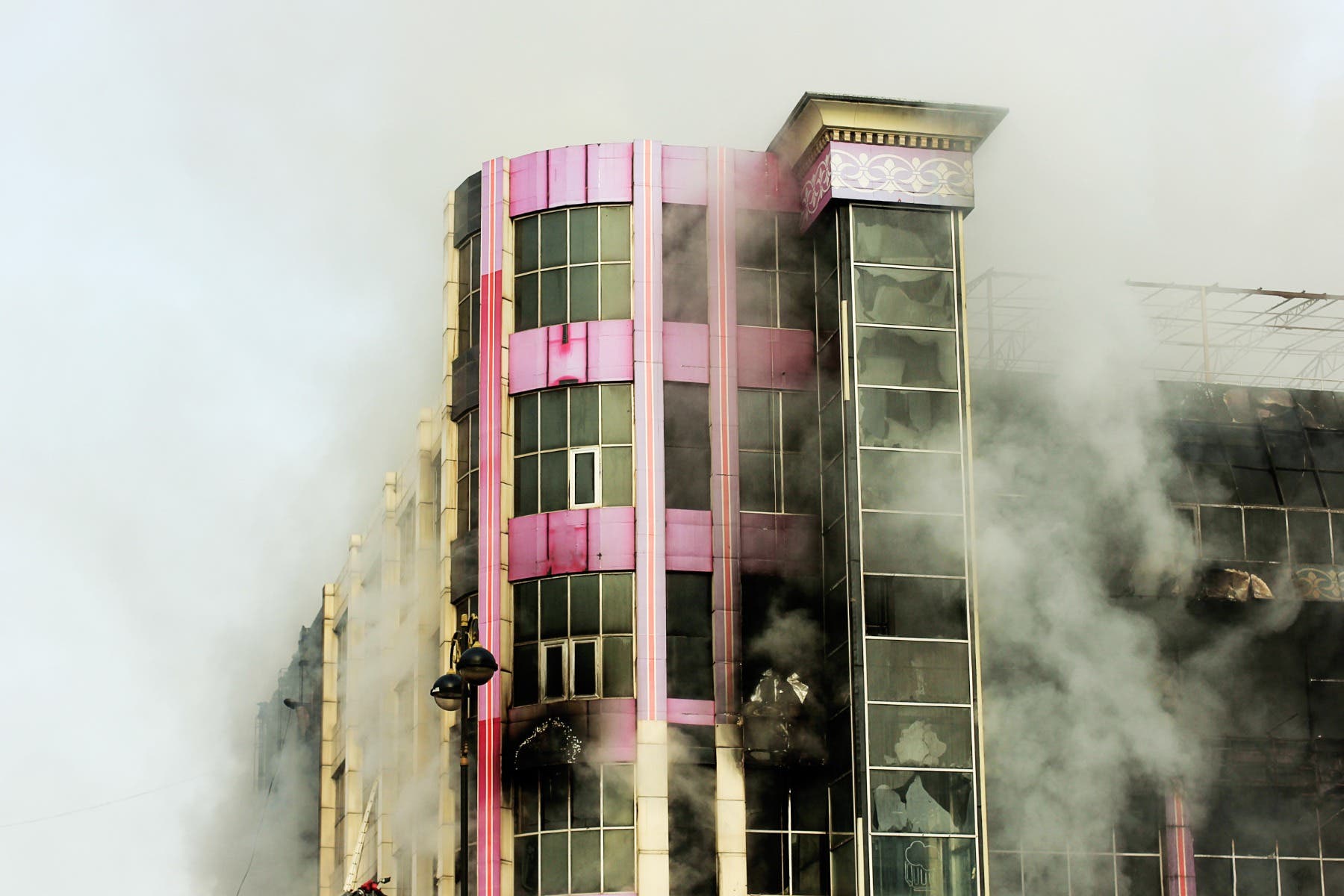Flame Spread Classification ASTM E84 and Fire Resistance ASTM E119
There's more to building a company or an establishment than an assembly of bricks and iron.
If not, how can the company prove that the whole building isn't susceptible to fire risk when there's a flame spread?
Before a building can be set up, it has to follow certain construction codes, guidelines, and standards.
These guidelines are developed by different Standard Development Organizations (SDOs). Among which is ASTM (American Society for Testing and Materials).
These products and test standards are put in place to lay down minimum requirements for different performance characteristics.
These performance characteristics include fire, thermal resistance, dimensional stability, and density.
Over the last few years, inquiries have been made about fire-rated temporary walls.
This is major because people are becoming more aware of fire-rated barriers and the consequences of a flame spread.
Lately, in some states, a one-hour fire-rated temporary wall is often included as part of the requirements of a building.
This requirement is very essential especially when other options to put out a fire are not in place as a functioning sprinkler system.
A fire-rated wall is considered an assembly; the assembly is what creates a containment that hinders flame spread.
There has only been one traditional method for a one-hour fire-rated wall containment.
This traditional way is building dry walls, and drywalls are made of different components to make them fit for an assembly.
These components include stud types, ceiling and floor tracks, gypsum joint placement, screw types, screw spacing, and screw head covering.
It could spell disaster for a building if there's a mistake with any of these components.
In light of this, this article will explore two types of fire testing standards for temporary walls.

Understanding Fire Testing for Temporary Walls
To ensure that no mistakes are made with the drywall components, it has to go through fire testing standards;
Two major types of fire testing standards will be explained subsequently;
1. ASTM E119
ASTM E119 is a fire testing standard that tests how long a building or construction material can contain a fire. It also tests to see if the structure remains intact after the flame spreads.
For an assembly to be declared one hour fire-rated, that assembly must have the stamina to endure fire for an hour before it collapse or/and spreads to the other side.
The result of the test then serves as a guide for contractors, insurance carriers, and other concerned persons in constructing the interior of a building. It tells them what can happen and what to expect when there's a flame spread.
Code Required Minimum Fire Resistance Standards:
Experts use the time-temperature curve to arrive at an accurate fire-resistance rating.
Assemblies are then assigned time, like 'one hour' or 'two hours' to measure how long they can withstand fire.
Fire-Resistant Floor, Ceiling, and Wall Assemblies
"Fire-rated floor and ceiling assemblies" or "fire-rated wall assemblies" are terms used when evaluating the entire assembly.
ASTM E119 evaluates the whole assemblies rather than evaluating the components singularly.
When done this way, it is easy to evaluate the strength and fire resistance of a building all at once.
Fire Endurance Testing
When performing a fire endurance test, professionals expose fire to assemblies to better gauge their response to flame.
The result of this test helps to have better knowledge of how much fire the assembly can endure during a flame spread.
Also, it helps to guide professional contractors on how to go about constructing interior spaces.
2. What is ASTM E84?
The ASTM E84 is a standard test method that's used to evaluate the material used for interior construction.
The ASTM is a test method that lasts for no longer than 10 minutes. It uses the Flame Spread Index (FSI) and Smoke Developed Index (SDI) to measure the surface burning characteristics of building materials.
The FSI measures how long it takes for the flame to spread across all the materials used in the interior construction.
The SDI measures the quantity of smoke that material gives out as it burns.
Before embarking on the interior construction of a building, some of the materials need to be tested with ASTM E84.
The result of this test determines how fast the flame spreads in case there's a fire incident. So, in compliance with section 803 of the International building code, these materials need to undergo ASTM E84 tests.
Some of the building materials that are usually tested include:
- Paints and Coatings
- Wallcoverings
- Adhesives
- Caulks and Sealants
- Insulation (including pipe, duct, and blown-in)
- Ceiling Tiles
- Acoustic Panels and Site Fabricated Stretc
- Fabric Systems
- Wood Products (including lumber, panel products, decorative trim, and shakes)
- Reflective Insulation and Radiant Barriers
- Plastics and Wood/Plastic Composites
- Textiles
How is ASTM E84 testing performed?
To test the surface burning behavior of a material, two indexes are used. The Flame Spread Index (FSI) and the Smoke Developed Index (SDI). This test is carried out in a 24" x 24" wide tunnel. This tunnel is known as the Steiner Tunnel.
The sample material is fixed to the top part of the tunnel and it is subjected to a controlled airflow. The forced air is supported by two burners providing 89kW of energy each. The flame then spreads through the tunnel, burning the whole sample in the tunnel.
The process of this activity is being studied through windows put in place by the side of the tunnel for monitoring. A special light is then used to observe the optical density to measure the amount of smoke in the tunnel.
As the process is ongoing, the whole process is being recorded by the software. This software produces the result of the FSI and SDI of that material.
These two indexes (FSI and SDI) are used to come up with the final result which determines if the material passed the ASTM E84 test.
What data will be included in an ASTM E84 report?
- Flame Spread Index (FSI)
- Smoke Developed Index (SDI)
- Time to Ignition
- Flame Spread Distance vs. Time
- Maximum Flame Spread Distance
- Temperature vs. Time
- Time to Maximum Temperature
- Smoke Area vs time
Flame Spread Index (FSI) and Smoke Developed Index (SDI) are the most important evaluations used to rate a product as passing the ASTM E84 test.
The result of the FSI and SDI test is what determines if a product is rated class A, B, C, or D. Many establishments and companies require that their products meet a certain class rating. But most preferably, during construction, they want their products to meet Class A fire rating standards.
What you need to know about ASTM E84 Class Ratings
Class A fire rating is considered the highest of the ratings. It denotes an FSI of 0-25 and an SDI of 0-450. Simply put, it means that it has the highest fire protection. Any product or material that's classified as Class A can withstand fire for a long time.
All companies, buildings, and establishments must use Class A fire rating standard materials for their Interior construction.
On a final note;
When considering a fire containment plan, the most crucial thing is ensuring that it passes the ASTM testing requirements.
ASTM E119 only evaluates the whole assembly which is made up of various components. When there's a mistake with the components, the fire containment plan is at risk of not containing fire for one hour.
Also, the ASTM E84 test is very important. This test assesses the flame spread and smoke spread characteristics of the materials used in construction.
The material has to pass the ASTM E84 test to be classified as a Class A fire rating product.










